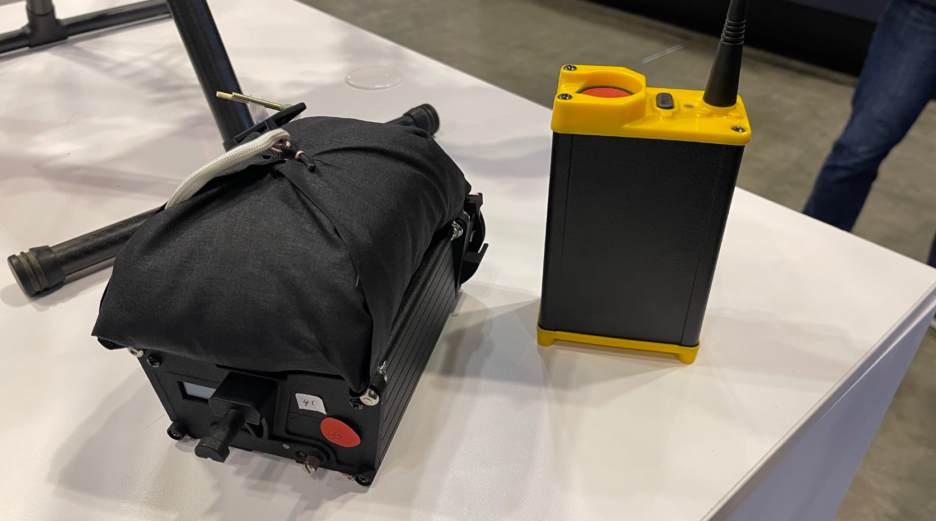A Canadian company, well-known for its drone parachute systems, has a new and innovative product. It’s a steerable parachute that can drop cargo – or even a drone with a technical malfunction – where you want it to go.
The company is called AVSS (Aerial Vehicle Safety Solutions) and it was founded in 2017.
“AVSS is a parachute recovery system. We build parachutes for DJI products as well as special integrations. We are a spring-based product, we don’t use a pyrotechnic solution,” explains Mariah Murray, VP of Operations with AVSS.
The pod-like systems are built to integrate with more expensive DJI drones, as well as some other custom integrations. You can see a pod integrated on the top of this DJI industrial drone.
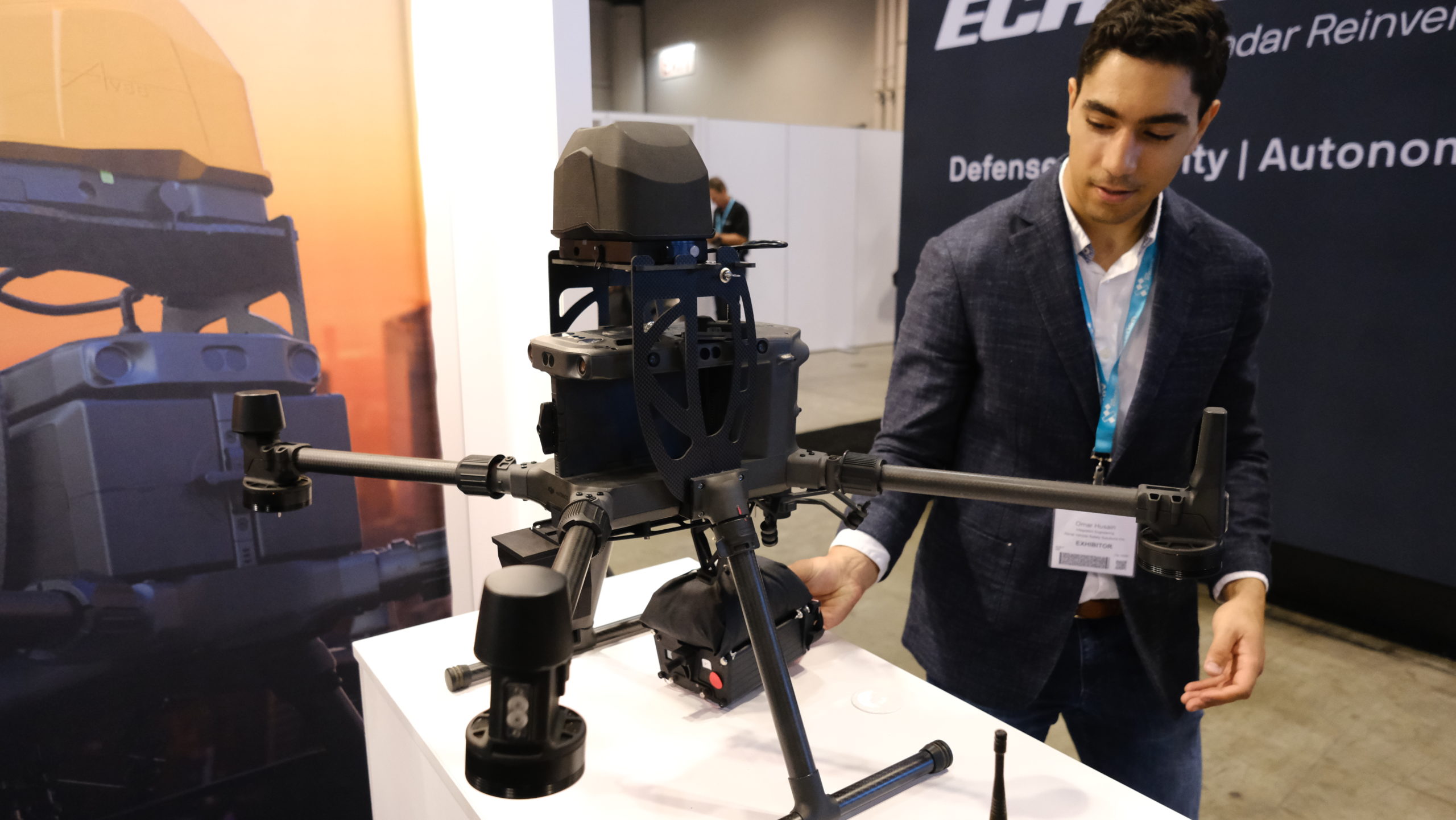
How does it work?
Well, there’s a fair bit of technology packed into the standard, non-steerable chutes (we’ll get to steerable in a moment). Each one is custom-tuned to know when something has gone wrong with a specific drone.
According to AVSS CEO Josh Ogden, the chutes deploy if a drone “breaches certain thresholds of the drone’s regular flight parameters.” For example, if the drone suddenly rolls or pitches at angles exceeding what the drone is capable of in normal flight, algorithms trigger the system to deploy. A minute time-delay is built-in to ensure it’s a genuine problem and not a brief anomaly.
“Some time delays to prevent false deployment,” says Ogden, adding that AVSS generally works in concert with drone manufacturers in order to “know what failure looks like.”
The systems are not inexpensive – but nor are the drones they’re designed for. For DJI’s M300, a system is $3600 and $1900 for the Mavic 3 (though there are lower price points.) But, wow, at the moment you need it you’ll be happy the system is there.
“As a parachute company, we’re there to exist, but no one needs to know we exist,” says Ogden. “It’s like an airbag in your car – you only know when your drone has failed.”
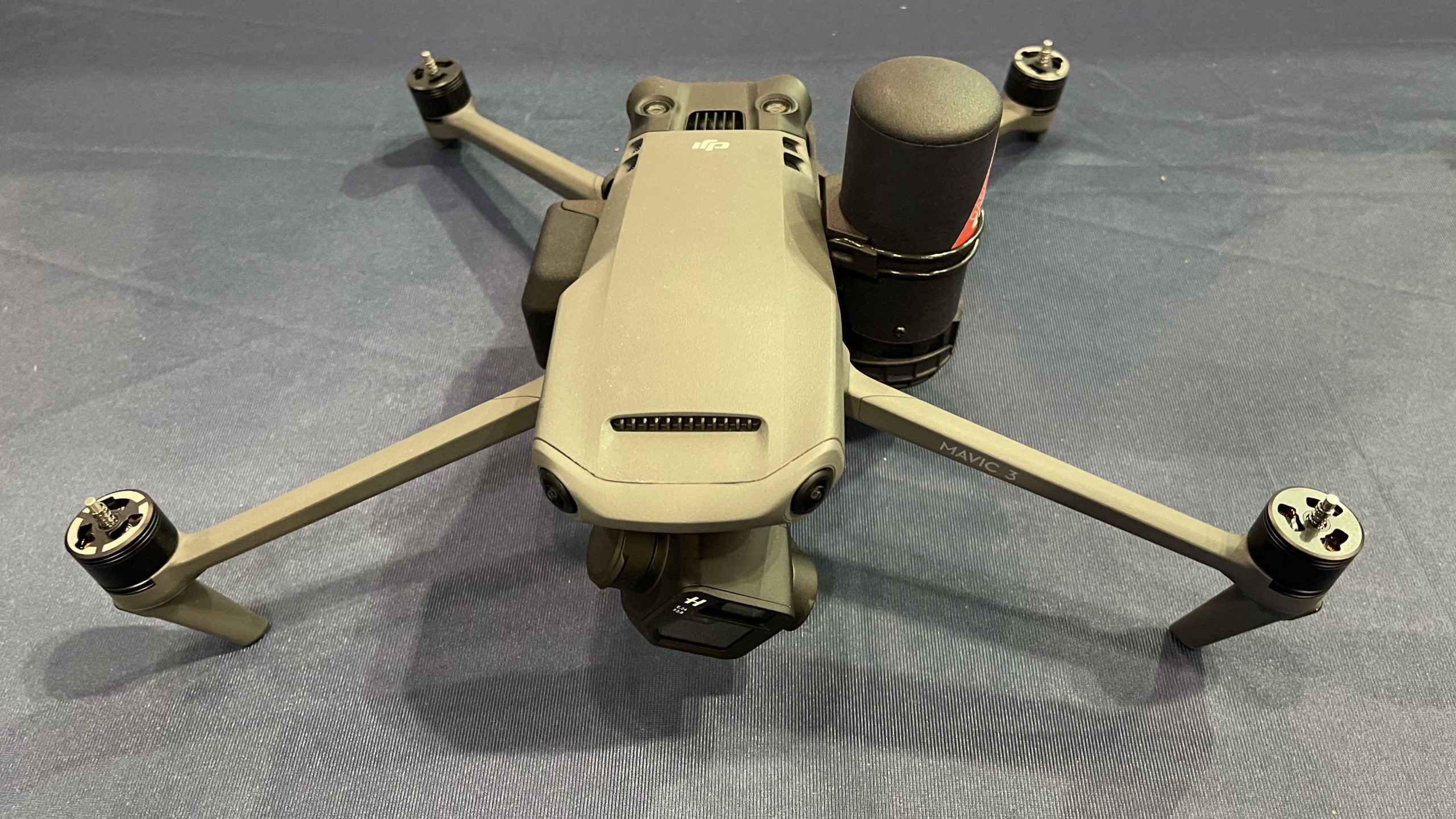
Steerable chutes
AVSS also recently launched its latest product, a steerable chute that can be used for cargo or the salvation of an errant drone. It’s called the Parachute Precision Guidance System, or PPGS.
With cargo, you pre-program the GPS coordinates where you want the package to land. You drop it as close to the desired landing location as possible, and servos adjust the chute’s control lines during descent.
“We have servos pulling the lines, so it’s like a paraglider,” says Ogden. The software is thinking “this is home point, I need to get there. It’s trying to navigate.”
And navigate it does. AVSS says the guided drops will consistently land within a few metres of the target. Here’s a look at that steerable chute package, along with a remote with a giant red button if you need to manually deploy.
Ogden says it’s intended for urgent missions.
“This is military re-supply, I’ve got to get ammo to a front line, or blood to someone who is about to die. Critical missions.”
Ontario trials
The system has also been tested in northern Ontario, and there’s an InDro Robotics angle. We supplied a Wayfinder heavy-lift drone to drop cargo with a steerable chute to a First Nations community in Ear Falls.
“Looking at using drones to deliver critial supplies to the First Nations community,” says Ogden. “This is opening up another critical medial delivery to those communities. Some existing drone delivery companies require really expensive infrastructure. That’s not affordable. This basically enables life-saving, mission critical items.”
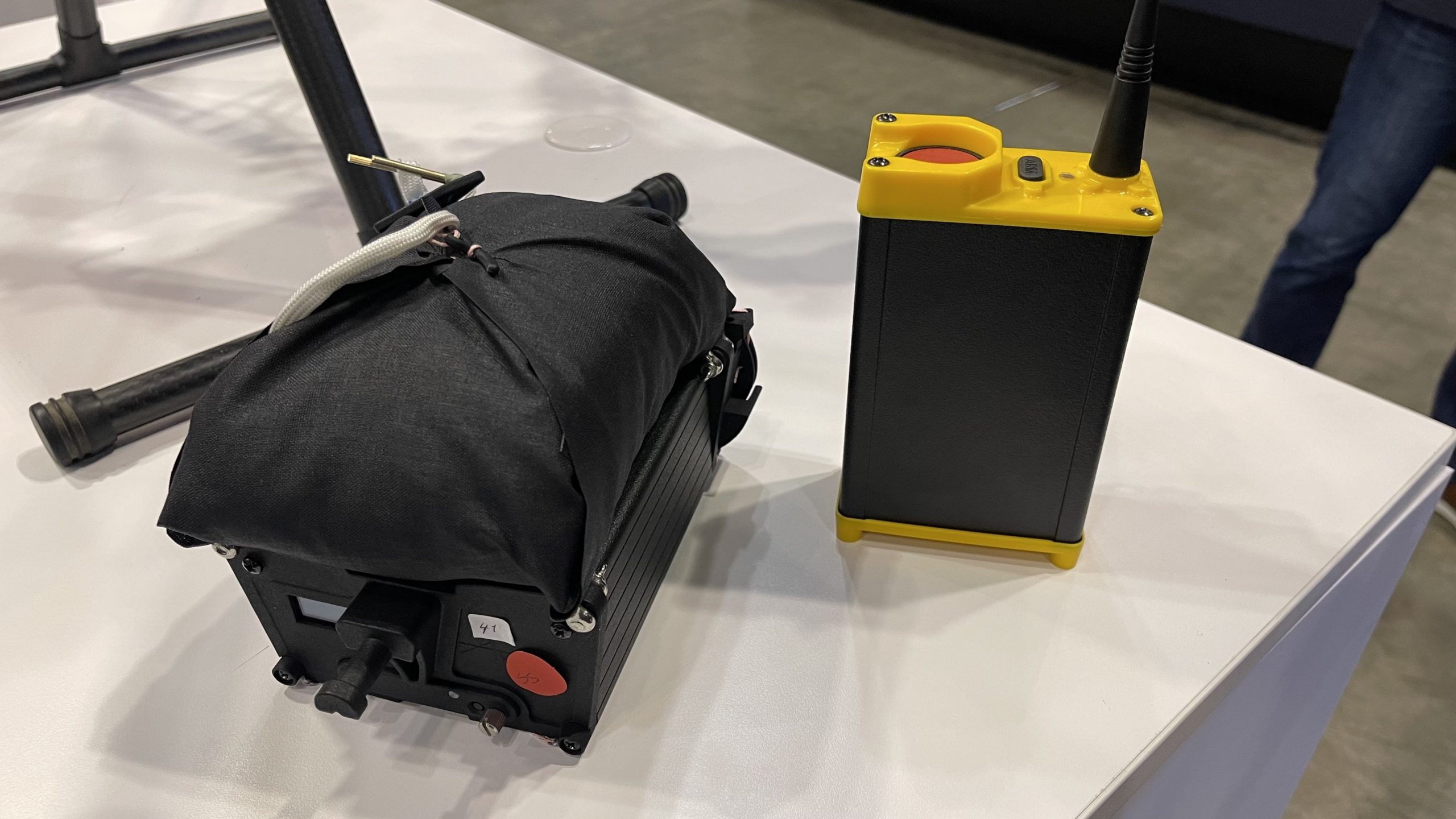
Real world testing
These chute systems go through an arduous testing phase before they’re released to the public. AVSS parachutes meet the rigid ASTM F3322 standards, and the company is close to having integrations for 10 different drones completed. It tests at the UAS NUAIR testing site. And yes, they have to do a lot of deployments.
“We have to crash the drone at NUAIR over 45 times,” says Ogden. “There’s a new standard coming, and then I think we have to crash 65 times. “
Some 100 units of the steerable chute have been purchased by the Canadian Armed Forces. And AVSS is already working plans for using steerable chutes for drones – with programming to avoid landing, for example, on a busy highway.
“We envision, our future of drone parachutes, is guided parachutes that can land the drone in a safe spot,” says Ogden. “When my drone fails, I want to ensure that it doesn’t drift into traffic. Guided parachutes are the future of drone parachutes, especially for drone delivery and urban missions.”
FYI that’s Josh on the left, Mariah on the right.
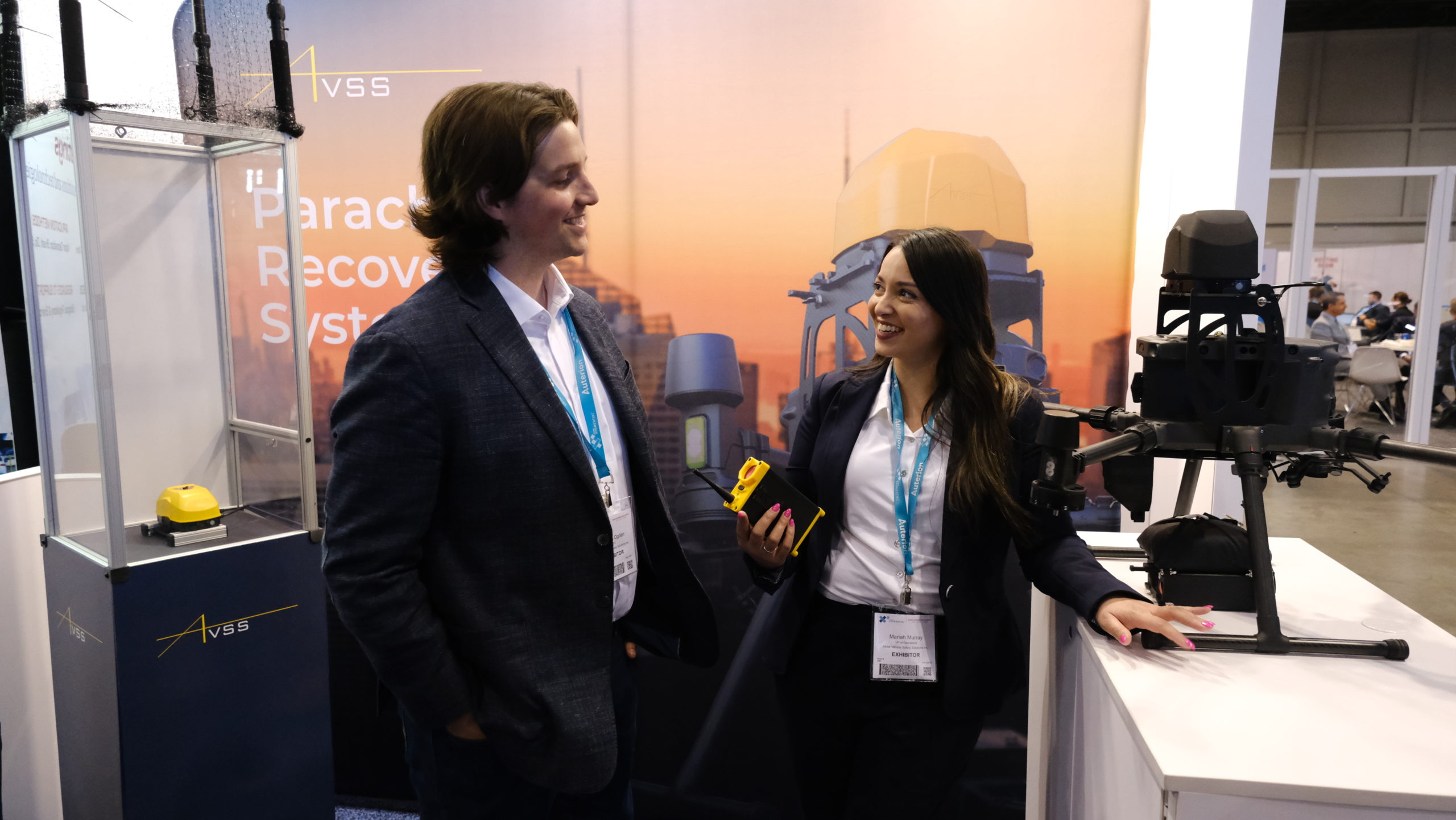
InDro’s Take
We’re big fans of AVSS. The company identified a gap in the marketplace and developed a well-engineered solution. The steerable chutes are already finding a market, and will ensure that critical goods get where they’re needed, when they’re needed, minimizing the risk of drift or entanglement with trees or other structures. Smart. We also really like the concept of a steerable chute that will ensure a drone will land somewhere safe.
We look forward to seeing where AVSS goes from here.

